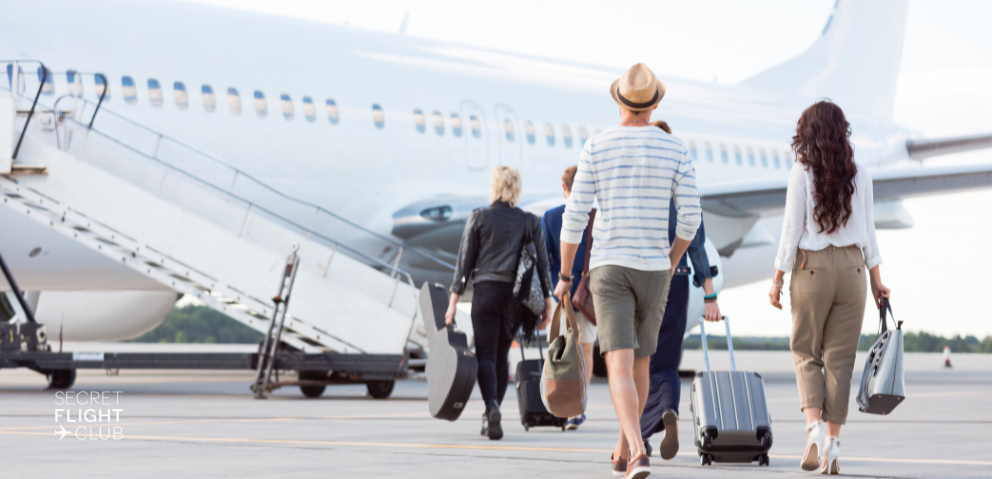What Do Plane Noises Mean? A Guide for Anxious Passengers
30 September 2024

For many air travellers, the symphony of noises during a flight can be a source of anxiety. From the whirr of engines to the creaking of the cabin, each sound has a purpose, yet can spark unease in the uninitiated. Understanding these plane noises isn't just about quelling fears; it's about gaining insight into the fascinating world of aviation.
This guide takes readers on an auditory journey through a typical flight. It explores the dings and buzzes during boarding, the roar of aeroplane taking off, and the various sounds that punctuate the journey. From the hum of wing flaps to the thud of landing gear, we'll demystify the cacophony of aeroplane sounds. By the end, even the most anxious passengers will have a new appreciation for the symphony of flight.
Common Noises During Boarding
As passengers settle into their seats, a symphony of sounds begins. The most common is the banging from below, which is simply the luggage being loaded. No need to fret; it's not gremlins having a party in the hold! Next comes the whoosh of air, accompanied by flickering lights. This happens when the plane switches from the airport's ventilation to its own system. It's like the aircraft taking a deep breath before the journey.
The overhead bins contribute their own percussion with occasional rattles. Meanwhile, a whining or roaring noise at the back of the plane might catch your ear. That's just the engines warming up, getting ready for their big performance. And let's not forget the star of the show: the intercom chimes. These 'dings' are the crew's secret language, ranging from simple passenger service calls to important safety messages. It's like Morse code, but with more hospitality!
Sounds During Take-off
As the plane prepares for its grand exit, passengers are treated to a symphony of peculiar noises. First up, the engines start their warm-up routine with a gear-shifting sound that might make one think they've accidentally boarded a Formula 1 car. Don't fret; it's just the engines flexing their muscles!
Next comes the runway rumba. A series of bumps might have passengers wondering if the pilot's taking a shortcut through a field. Fear not! It's just the plane dancing over runway joins or lights. Think of it as the aircraft's way of doing the cha-cha before takeoff.
As the plane picks up speed, the engines rev up, creating a whooshing noise that sounds like a giant hairdryer. This is followed by two quick, loud thumps from under the plane. No, it's not the plane dropping its luggage – it's just the landing gear tucking itself in for the journey ahead.
In-flight Noises Explained
Once airborne, passengers might think they've entered a flying orchestra. The star of the show? The engines, of course! They're like temperamental divas, constantly changing their tune. During level-off, they quiet down dramatically, as if taking a bow. Don't panic – they haven't gone for a tea break; they're just adjusting to the thinner air up there.
But wait, there's more! The aeroplane's body, or 'fuselage' if you're feeling fancy, joins in with its own aerodynamic hum. It's like the plane's way of saying, "Look at me, I'm flying!" The faster it goes, the louder it gets. It's the aircraft's version of showing off.
Landing Sounds Demystified
As the plane prepares for its grand finale, passengers are treated to a symphony of peculiar noises. First up, the 'Aeolian Harp effect' kicks in. It's like the aircraft's attempting to serenade the runway with its own howling wind orchestra. This eerie melody is courtesy of the flaps and landing gear disturbing the air's smooth flow.
Next comes the rumbling crescendo. It's not the pilot's stomach grumbling, but a cocktail of reduced engine thrust, increased aerodynamic noise, and the landing gear's grand entrance. The Airbus models, ever the drama queens, make quite a racket with their speed brakes popping up from the wings.
Finally, the grand finale: the reverse thrust roar. It's the plane's way of saying, "Whoa, Nelly!" as it rapidly decelerates on the runway. Passengers might feel like they're being pushed forward - it's just the aircraft's enthusiastic way of applying the brakes.
Conclusion
Understanding the symphony of aeroplane noises has a significant impact on reducing anxiety for nervous flyers. This guide takes passengers on an auditory journey, demystifying the sounds from boarding to landing. By shedding light on these mysterious noises, travellers can transform their fear into fascination, turning each flight into an opportunity to learn about the inner workings of aircraft.
At the end of the day, knowledge is power when it comes to conquering flight anxiety. Armed with this newfound understanding, passengers can relax and even enjoy the unique soundscape of air travel. So, the next time you hear a strange noise on a plane, instead of worrying, you might find yourself thinking, "Ah, that's just the landing gear saying hello!" Happy and peaceful travels to all!
FAQs
What does it signify when you hear two dings on an aeroplane?
Two dings typically occur about five minutes after take-off, indicating that the aircraft has ascended to 10,000 feet. This is the point at which the use of Wi-Fi and laptops is permitted, and it also signals to the cabin crew that it's safe to move around.
Can the noise from aeroplanes be a disturbance?
According to a 2023 study by Peters, aircraft noise levels as low as 45 dB can increase the likelihood of sleeping less than seven hours per night, suggesting a significant impact on sleep quality.
What are the health impacts of aircraft noise on individuals?
Research indicates that exposure to noise levels above 55 dB at night significantly increases the risk of heart attacks. Furthermore, exposure to levels above 45 dB at night can lead to hypertension, which may subsequently increase the risk of hypertensive strokes and dementia.
Why do some individuals experience anxiety while flying?
Common reasons for anxiety during flights include fear of death, claustrophobia, motion sickness, the risk of contracting diseases like COVID-19, and the potential for judgement from other passengers. These fears are often highlighted by the unusual environment and the act of relinquishing control to the flight crew.

